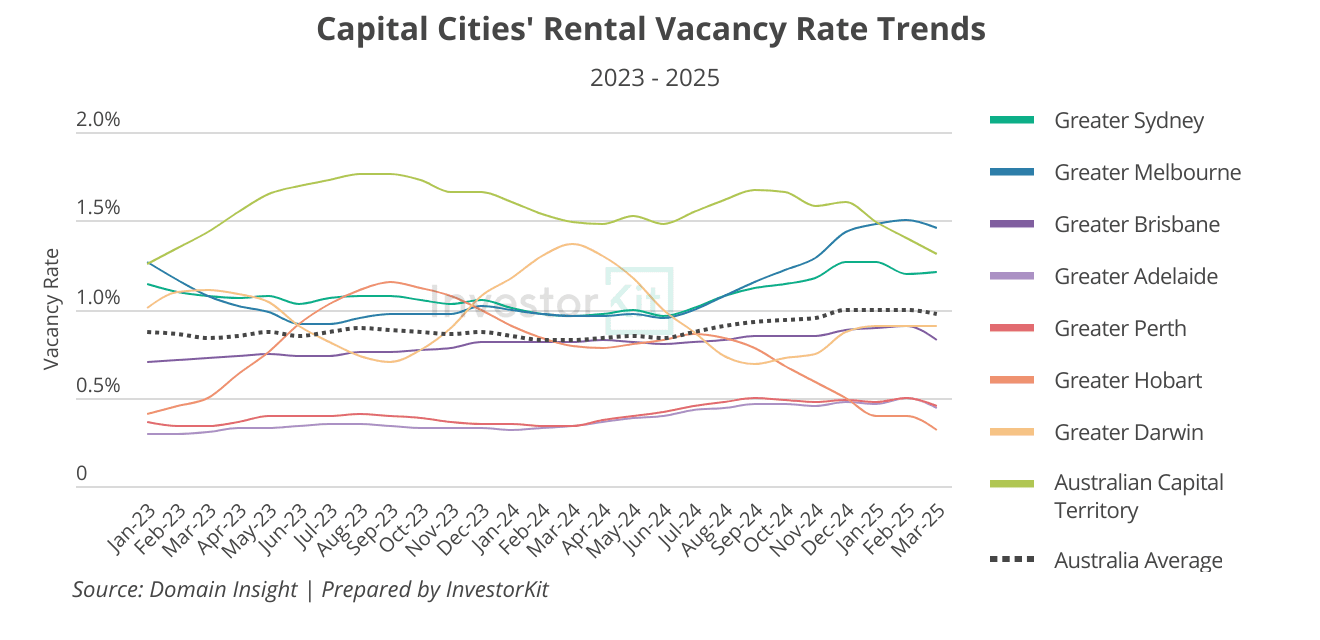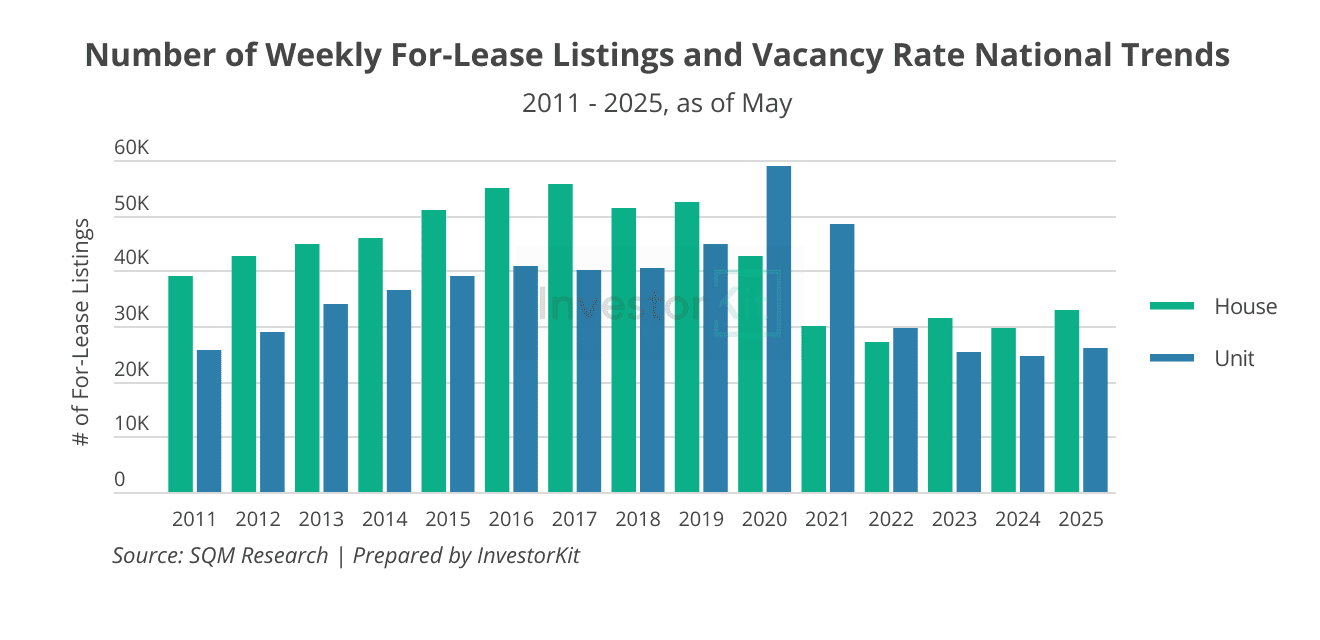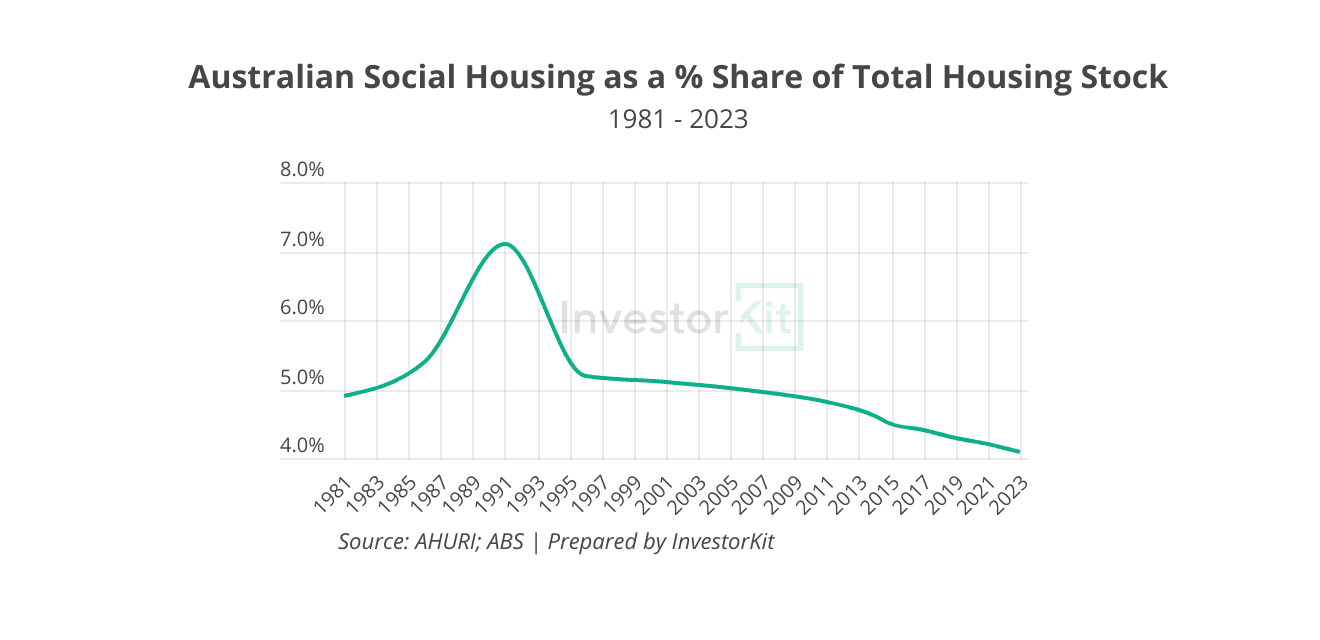Vacancy rates are creeping up in many suburbs in Sydney and Melbourne. Some are calling it a sign of relief for Australia’s rental crisis.
But here’s the truth: Australia’s rental crisis hasn’t ended. It’s just evolving.
Despite national averages appearing to stabilise, the real story lies in the detail. In many smaller markets, pressure is either remaining high or increasing (see chart below).

According to InvestorKit’s 2025 Rental Pressure Review, more than two-thirds of Australia’s SA3 regions still have vacancy rates below 1.0%. That’s a level many industry experts would still classify as crisis territory.
Rental listings might be marginally higher than they were last year, but supply remains well below pre-COVID levels, and in many areas, the market is still struggling to recover. For renters, that means competition. For investors, it signals ongoing opportunities if they know where to look.
What’s Actually Broken? A Look at the Supply Side
The structural issues impacting rental supply didn’t appear overnight. They’ve been building for years. Let’s break down what’s causing the logjam and why it’s unlikely to resolve any time soon.
1. Private Landlords Carry the Load, But Capacity Is Shrinking
The private sector provides over 80% of Australia’s rental housing. Since the onset of the pandemic, the number of rental listings in the private sector (both houses and units) has remained consistently below pre-COVID levels (see chart below), leading vacancy rates to fall to decade-long lows.

In 2025, national vacancy rates may have ticked up from 0.8% to 1.0%, but they’re still historically low. And the backlog of rental demand remains significant.
2. Build-to-Rent Is Not Yet Thriving
Build-to-Rent (BTR) is often touted as an important alternative to traditional rental properties, but right now, it barely registers. BTR stock accounts for just 0.1% of the national dwelling supply. Even if every project in the pipeline were built, BTR would still represent just 0.6% of all housing stock. In addition, rollout remains slow due to tax structures, planning bottlenecks and limited financing models.
In short, it’s not going to solve the crisis in the short term.
3. Social Housing Hasn’t Kept Pace
The portion of housing made up by social and affordable housing has steadily declined for decades (see chart below).

Meanwhile, the demand for it has soared.
Public housing waitlists are now near record highs, and the number of ‘greatest need’ households, such as those experiencing homelessness, has risen 66% over the past 10 years. The public sector simply doesn’t have the stock.
4. New Builds Are at Decade-Low Levels
Dwelling completions have fallen to their lowest point since 2014. New housing starts have been increasing, but are still at a significantly lower level compared to previous years (see chart below). The reasons are well known: construction costs remain high, skilled labour is hard to find, and lending conditions for developers continue to be tight, among other factors.

5. Population Growth Remains Strong
In 2023, Australia welcomed 547,200 overseas migrants, the highest number in over 50 years. Although 2024 saw a slight decline, net migration still sits well above the long-term average (see chart below).

Most new arrivals rent before buying, funnelling immediate demand into an already supply-constrained market. This isn’t just an issue for major cities. Migration has diversified, and regional hotspots are feeling the pressure too.
What This Means for Property Investors
So what does a broken supply environment actually mean for those looking to grow a property portfolio in 2025?
1. Rent Growth Will Persist, But Not Everywhere
In markets where vacancy rate remains under 1% and new supply is minimal, upward pressure on rents will likely continue. This includes areas such as Toowoomba (QLD), Bathurst (NSW), and Bendigo (VIC), as well as similar regions that combine affordability with economic resilience and constrained pipelines.

Investors focusing solely on capital city headlines risk missing these pockets of rental growth.
2. Supply Gaps Create Yield Opportunities
Where rental demand outstrips available supply, rents rise. That means improved rental yields and better cash flow, even in a high-rate environment. Rental yields have been improving in markets where rents have outperformed sales prices in the past few years, such as many VIC markets. The chart below shows four examples.

On the other hand, if you are already holding a property, the rising rents will continue to improve your cash flow, reducing financial pressure introduced by high interest rates.
But this isn’t uniform. Success hinges on identifying where the supply pressure actually exists, rather than relying on state or metro averages.
3. DIY Research Has Its Limits
During a national boom, investors might get away with light research and a few conversations. But when the line between opportunity and overexposure is razor thin, granular insight becomes essential.
Supply is hyper-local. Two areas in the same city can have wildly different vacancy rates, building approval pipelines, and rent trajectories (Think of Melbourne’s eastern vs. western suburbs!). The difference between outperforming and underwhelming often comes down to data, not assumptions.
Australia’s rental crisis isn’t easing. It’s settling into a new norm, shaped by long-standing supply issues that won’t resolve quickly.
For property investors, this isn’t a signal to sit still. It’s a sign to get smarter. With the right approach, this moment in the market could offer more upside potential than most realise, not through speculation, but by recognising the structural trends that others are ignoring. Need assistance with identifying trends and the right markets? Talk to us today by scheduling in your 15-minute Discovery Call!
.svg)
